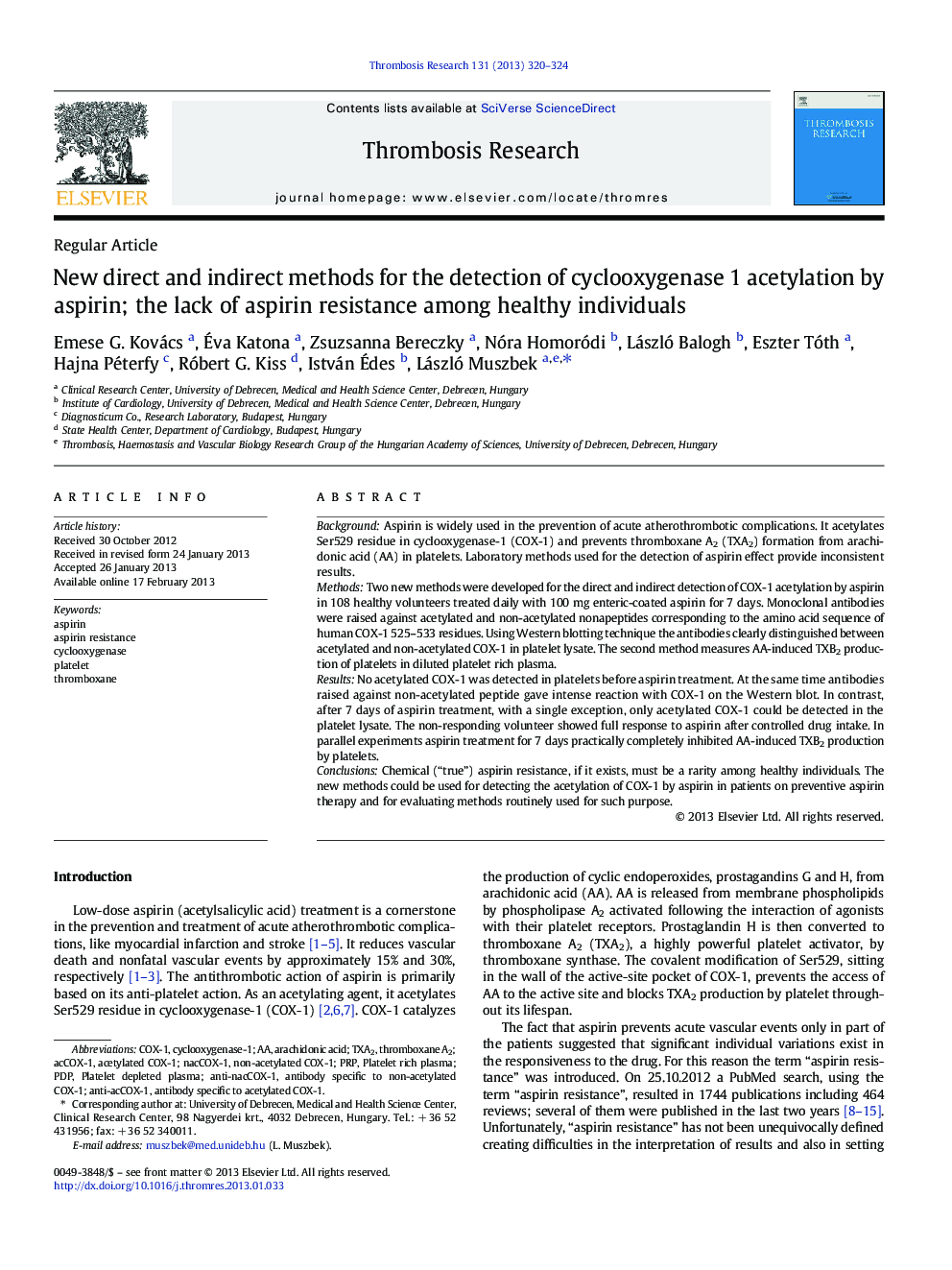| Article ID | Journal | Published Year | Pages | File Type |
|---|---|---|---|---|
| 3027216 | Thrombosis Research | 2013 | 5 Pages |
BackgroundAspirin is widely used in the prevention of acute atherothrombotic complications. It acetylates Ser529 residue in cyclooxygenase-1 (COX-1) and prevents thromboxane A2 (TXA2) formation from arachidonic acid (AA) in platelets. Laboratory methods used for the detection of aspirin effect provide inconsistent results.MethodsTwo new methods were developed for the direct and indirect detection of COX-1 acetylation by aspirin in 108 healthy volunteers treated daily with 100 mg enteric-coated aspirin for 7 days. Monoclonal antibodies were raised against acetylated and non-acetylated nonapeptides corresponding to the amino acid sequence of human COX-1 525–533 residues. Using Western blotting technique the antibodies clearly distinguished between acetylated and non-acetylated COX-1 in platelet lysate. The second method measures AA-induced TXB2 production of platelets in diluted platelet rich plasma.ResultsNo acetylated COX-1 was detected in platelets before aspirin treatment. At the same time antibodies raised against non-acetylated peptide gave intense reaction with COX-1 on the Western blot. In contrast, after 7 days of aspirin treatment, with a single exception, only acetylated COX-1 could be detected in the platelet lysate. The non-responding volunteer showed full response to aspirin after controlled drug intake. In parallel experiments aspirin treatment for 7 days practically completely inhibited AA-induced TXB2 production by platelets.ConclusionsChemical (“true”) aspirin resistance, if it exists, must be a rarity among healthy individuals. The new methods could be used for detecting the acetylation of COX-1 by aspirin in patients on preventive aspirin therapy and for evaluating methods routinely used for such purpose.
